MoapaPk - Sep 17, 2009 3:16 am - Voted 10/10
Thought-provokingStepping back, we have to realize the enormous effect of post-"Big Ice Age" climate on the pre-1850 size of glaciers in the lower 48. In the CA Sierra, for example, there were no glaciers when the LIA started about 700 years ago.
I have a wonderful book on the Geology of the Sierra, which warns about man's interference with the climate, and the likely effect... increased glaciation. The book was written after that brief period in the late 60s when the glaciers at Rainier began to advance. The calculation then was that increased CO2 would lead to increased humidity, which would trigger a small percent cloud increase, which would plunge us into the next ice age due to decreased insolation. Humbling.
Bob Sihler - Sep 17, 2009 9:48 pm - Hasn't voted
Re: Thought-provokingAre the Sierra glaciers true glaciers? I know some have crevasses, but do they have the size, thickness, and downhill movement? Or are they more like the Timpanogos Glacier, which has actually melted out totally on occasion?
On a less serious note, will the next big thing then be static climate?
MoapaPk - Sep 18, 2009 12:15 am - Voted 10/10
Re: Thought-provokingConventionally, the thickness was not a direct part of the definition; they just have to be thick enough to flow. The Sierra glaciers do flow, and the Palisades Glacier can be seen to calve into the lake at the bottom; but they no longer top the moraines, as they likely did 200 years ago -- they melt as fast at the lower edge as they are replenished above.
Some people call them permanent snowfields, but it's hard for a static snowfield to produce moraines.
The IHD defined types of glaciers, but to be honest, the definitions have faded from my mind. But this should keep you busy for a while.
AdamIsaac - Sep 18, 2009 1:25 pm - Voted 10/10
Great ArticleGreat piece. Beautiful park, I have been going there since I was a little kid, and will always go even just to see the beautiful mountains, although without glaciers, something will be missing.
Very well written. Thanks.
Bob Sihler - Sep 20, 2009 5:59 pm - Hasn't voted
Re: Great ArticleThank you. I hope I will always go there as well. The place will always be exceptionally beautiful, but it will indeed be sad as I one day look out over what was once I glacier I saw.
T Sharp - Sep 20, 2009 11:54 pm - Voted 10/10
Great!Nice article Bob, and the discussion of glaciers in the comments section has been interesting. One of the classic definitions differentiating glaciers from snow fields is if the outlet water leaving the mass is silted, if yes then it denotes glacial activities [ie movement and scouring], if not then its main mass is not ice, but rather snow. Although the color of the lakes will change with the loss of the silting, they will remain breathtakingly beautiful!
Well Done;
Tim
Bob Sihler - Sep 21, 2009 10:33 am - Hasn't voted
Re: Great!Thanks for reading, Tim. Yes, it has been an interesting discussion, and I agree that the lakes will remain beautiful. And at least it will still be a long time until the glacial colors are totally gone.
BobSmith - Sep 25, 2009 7:13 pm - Voted 10/10
I thought...there was a bit more time to see the remaining glaciers. None for the kids of just a few years from now. Alas...
Bob Sihler - Sep 27, 2009 11:46 am - Hasn't voted
Re: I thought...Better get out there in the next 10 years. Even though most say 2030 is the end, the melting rate seems to be increasing, so those other predictions may unfortunately become true.
MarkDidier - Sep 28, 2009 9:20 pm - Voted 10/10
Global Warming or Global Climate ChangeBob,
Another great article...now I know I need to get out to GNP sooner than later.
I recently got away from saying "global warming" and have started to say "global climate change". I was given this good piece of advice a few months ago. "Global Warming" is bad "branding", as it was put to me. Here in Indiana we had the coldest July and August on record for a long time, so it's easy for people to joke about global warming. But when stated as "global climate change", it comes across much different, and I find that most people have a harder time with their arguments. It's just semantics, but it does make a difference.
Again, great article.
Mark
Bob Sihler - Sep 29, 2009 11:44 am - Hasn't voted
Re: Global Warming or Global Climate ChangeMark, thanks.
I agree that semantics can make a difference. Another one: the messenger. I think a lot of people close themselves to this issue because they associate it with folks like Al Gore and Greenpeace and don't like them. And it works both ways, for I've seen liberals ignore good points from conservatives seemingly because they don't like who's making them.
BLong - Oct 3, 2009 12:43 am - Hasn't voted
Great articleThanks for sharing. Certainly an amazing place. I have been fortunate to visit there twice, although I was only able to really get out once -- we did a 3-day backpack loop up Kintla Lake over Boulder pass and then back down through a couple of valleys.
I would love to get back out there!
Bob Sihler - Oct 3, 2009 8:29 am - Hasn't voted
Re: Great articleI would love to see the Boulder Pass/Hole in the Wall (Rock?) area. Thanks for reading.
BLong - Oct 3, 2009 11:58 am - Hasn't voted
Re: Hole in the wallYeah, you come back through the Hole in the wall. Really an amazing backpacking trip. One thing I really enjoyed is that we didn't see any other backpackers during the entire trip. There were 3 groups of scientists, but nobody just hiking for pleasure. A truly wild experience!
Here are a couple photos on SP from the hike:
http://www.summitpost.org/image/554687/Glacier-National-Park.html
http://www.summitpost.org/image/554688/170953/loo-with-a-view-glacier-np.html
suddendescent - Oct 9, 2009 3:50 pm - Voted 9/10
A global trend ?As everyone knows global warming is to account for such changes to observe in altitude and at the poles. Although it is interesting to note that pollution (such as from soot- diesel exhaust is one of the contributors) in depositing dark particules which readily absorb sunlight (as opposed to reflecting it away which snow does) is a factor to take into consideration...
I vividly remember reading an old account describing the wilderness of northern Quebec which described glaciers in one of their mountain ranges (most probably the Torngats but possibly the Groulx Jaffrat hills or those in the immediate vicinity further south west of the Manicougan crater). Such glaciers are obviously but a memory .
I wonder how long the trend will continue with further consideration for the fact that with deforestation less and less oxygen is available ...
dan2see - Oct 9, 2009 5:15 pm - Hasn't voted
What will the park be called?You ask, "What will the park be called when the glaciers are all gone?"
Glacier National Monument
mauri pelto - Oct 10, 2009 7:51 am - Voted 7/10
Forecasting glacier survivalAn examination of each Glacier National Park glacier has been completed and one third have shrunk relatively little from 1966 to the present and two thirds are either gone or on lost considerable area. The 2015 is overdone as is an estimate for 2030. The same ratio applies to the Wind River Range. Survival Forecasts
Bob Sihler - Oct 15, 2009 10:16 pm - Hasn't voted
Re: Forecasting glacier survivalI hope you turn out to be right. The year I hear the most is 2030, but if the glaciers last longer, I won't complain.
basagix - Oct 14, 2009 7:14 pm - Hasn't voted
definitionsNice article.
A simple definition for a glacier is a perennial mass of ice which moves, and originates on land. Thickness and area criteria are not required. The GLIMS link that MoapaPk provided is a great source for classification of glaciers.
'Perennial' snow field is preferred over 'permanent'.
Bob Sihler - Oct 15, 2009 10:18 pm - Hasn't voted
Re: definitionsThat's actually good news in a way. By that definition, it means that the glaciers will last longer and that there are more of them. The definition I used is from the Glacier NP naturalists; I don't know if it's applied more widely than that.


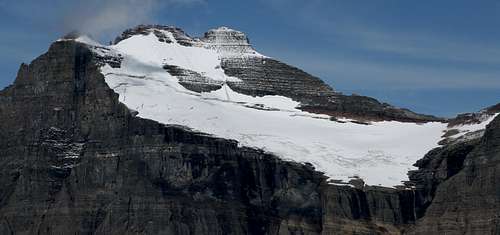
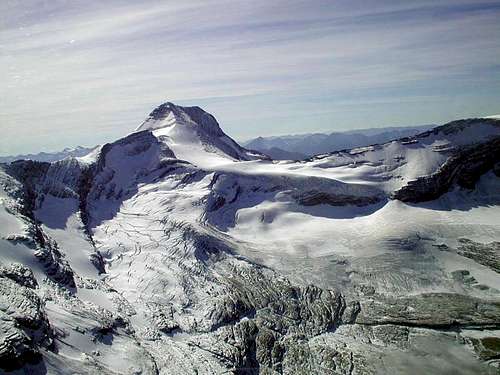
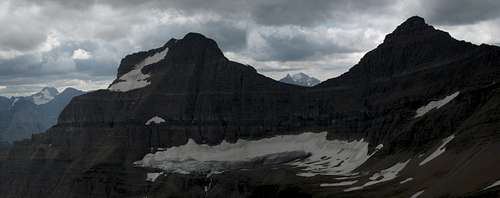
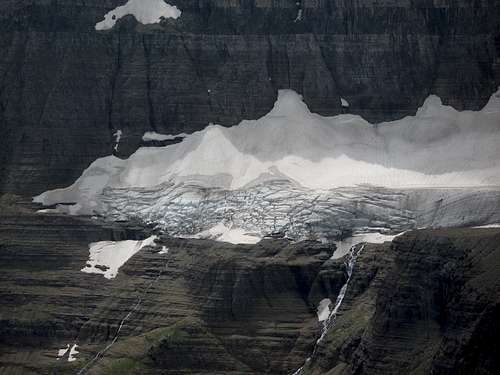
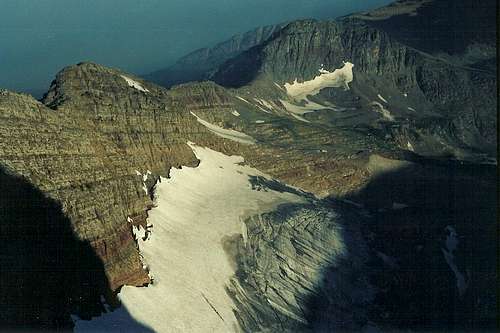
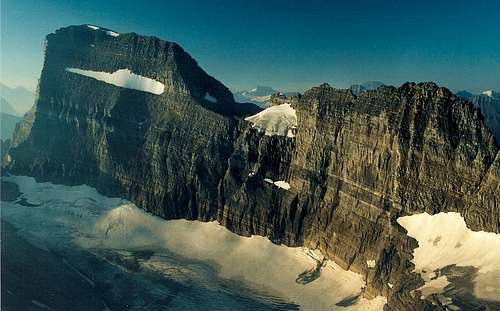
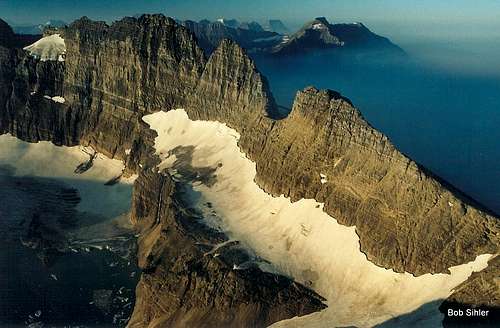
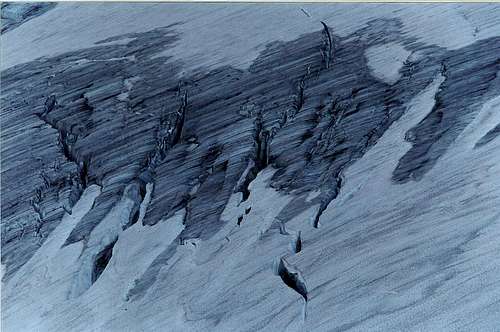
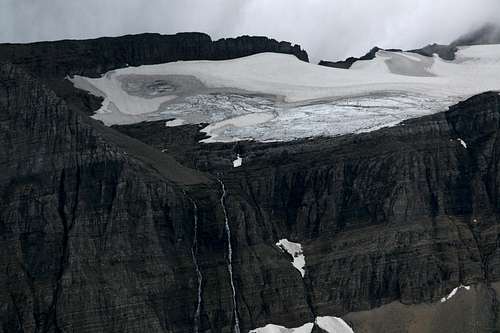
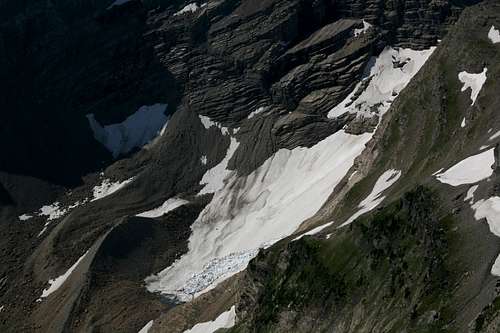












Comments
Post a Comment